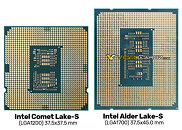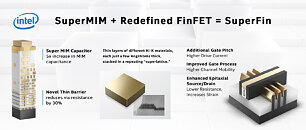
Intel "Tiger Lake" Based Pentium and Celeron to Feature AVX2, an Instruction the Entry-Level Brands were Deprived Of
Intel's next-generation Pentium Gold and Celeron entry-level processors based on the "Tiger Lake" microarchitecture could finally receive the AVX2 instruction set. Intel had segmented AVX and AVX2 to be exclusive to the Core and Xeon brands, with the Pentium Gold and Celeron products based on the same microarchitectures to artificially lack these instructions.
Intel updated its ARK product information database with entries for "Tiger Lake" based Pentium Gold and Celeron products. The page for the Pentium Gold 7505 and Celeron 6305, mention support for AVX2 besides SSE4. Both are mobile chips with 15 W TDP, and are built on the same 10 nm SuperFin process as the rest of the 11th Gen Core "Tiger Lake" processor family.
Intel updated its ARK product information database with entries for "Tiger Lake" based Pentium Gold and Celeron products. The page for the Pentium Gold 7505 and Celeron 6305, mention support for AVX2 besides SSE4. Both are mobile chips with 15 W TDP, and are built on the same 10 nm SuperFin process as the rest of the 11th Gen Core "Tiger Lake" processor family.

















